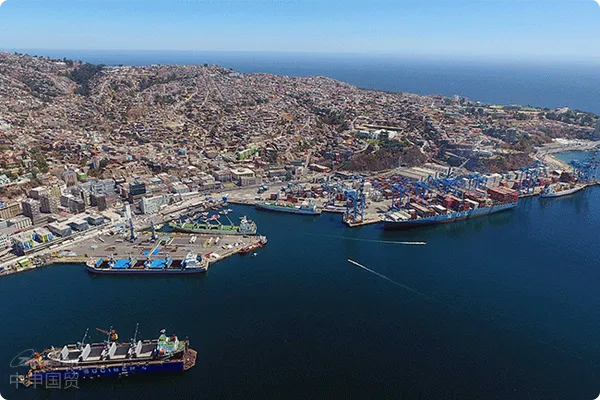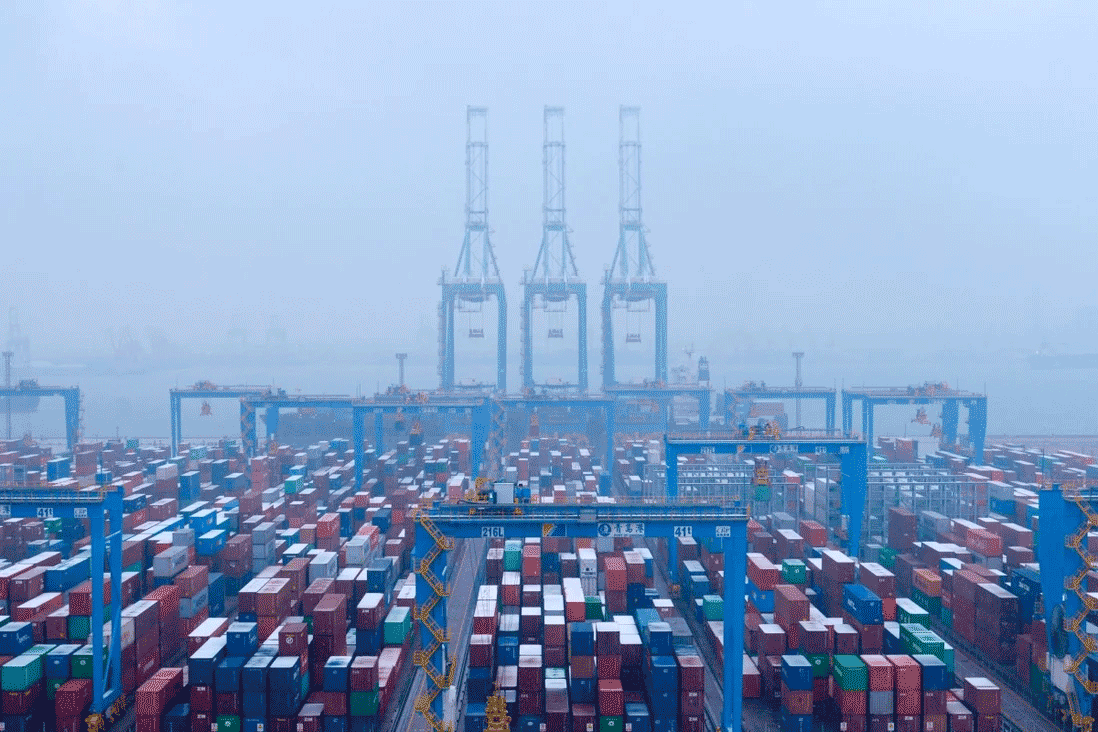- Shanghai Zhongshen International Trade Co., Ltd. - Two decades of trade agency expertise.
- Service Hotline: 139 1787 2118

Introduction
In todays globalized business environment, importing advanced 3D printer equipment can bring new development opportunities to enterprises. Importing 3D printers from Japan involves many complexforeign tradelinks.ZhongShen International TradeFocus on importExport Representationservices, especially having professional capabilities in document processing and logistics services. Next, we will comprehensively analyze the relevant processes for you.
Challenges and opportunities in the international trade situation
The current international trade situation is complex and volatile. Trade protectionism is on the rise, and tariff adjustments are frequent, which poses the challenge of increased tariff costs for importing 3D printers from Japan. For example, some countries may impose additional tariffs on specific electromechanical products to protect their domestic related industries. However, opportunities also exist. The global digital transformation is accelerating, and the demand for 3D printing technology is growing. As a country with advanced 3D printer technology, Japans products have strong competitiveness in the global market. Moreover, the entry into force of regional trade agreements such as the RCEP provides more favorable tariff concession conditions for imports from Japan, reducing import costs.
Professional Documentation Handling Capabilities
When importing 3D printers from Japan, document processing is of crucial importance. First is the Commercial Invoice, which details information such as the description, quantity, and value of the goods, and is an important basis for customs valuation and taxation. The content of the invoice must be accurate, including details such as product models and technical parameters. Second is the Bill of Lading, which is a certificate of goods transportation and a symbol of the right to the goods. When processing the Bill of Lading, ensure that the shipper and consignee information is accurate, and also pay attention to the type of Bill of Lading. For example, a Clean B/L can ensure the goods are transported in good condition. In addition, the Packing List should record the packaging of the goods in detail for easy customs inspection.
ZhongShen International Trade has rich experience in document processing and can quickly and accurately review and prepare various documents to avoid delays and fines caused by document errors. We will communicate closely with suppliers to ensure that the document information is consistent with the actual situation of the goods. At the same time, we are familiar with the special requirements of customs in various countries for documents. For example, the Japanese customs may have specific format requirements for the description of electromechanical products, and we can handle them properly.It is recommended to verify through the following methods:---
Professional Logistics Arrangement Capabilities
The logistics link is crucial for the timeliness and safety of importing 3D printers from Japan. If choosing (Ocean Freight), select the appropriate container type, such as a 20 - foot or 40 - foot container, according to the volume and weight of the goods. Considering that 3D printers may be precision equipment, take good measures for cargo reinforcement and shock prevention to prevent damage during transportation. The choice of shipping route is also key. Combine the shipping schedule and the situation of the port of destination to select the fastest and most economical route.Maritime TransportationIf choosing (Air Freight), although the cost is higher, the speed is fast, which is suitable for the import of urgently needed 3D printers. When shipping by air, pay attention to the packaging size and weight limits of the goods, as well as the special regulations of airlines for the transportation of electromechanical products. ZhongShen International Trade maintains long - term cooperative relationships with many internationally renowned shipping companies and airlines, and can obtain preferential freight rates and priority cabin arrangements. At the same time, we also provide Door – to – Door logistics services, picking up goods from the Japanese suppliers warehouse and directly transporting them to the designated location of domestic customers, tracking the cargo transportation status throughout the process to ensure the safe and timely delivery of the goods.
For the Southeast Asian market, there is a specific process for importing 3D printers. Taking Indonesia as an example, first, an Import License Application needs to be made. Enterprises need to submit applications to the relevant Indonesian departments, including documents such as the companys business license and the list of imported goods. Only after the application is approved can subsequent operations be carried out. After the goods arrive at the Indonesian port, Customs Declaration is required. When declaring customs, documents such as commercial invoices, bills of lading, and packing lists need to be submitted, and the customs will inspect and value the goods.Air TransportationWhen importing 3D printers, some problems may be encountered. For example, the Indonesian customs has strict requirements for the safety and quality standards of electronic products, and relevant certification documents may be required. The solution of ZhongShen International Trade is to communicate with customers in advance to inform them of the required certifications. Although we do not directly handle certification services, we will assist customers in preparing relevant materials and communicating with certification agencies to ensure the smooth passage of the certification. At the same time, during the customs declaration process, with our rich experience and professional knowledge, we will declare the value of the goods reasonably to avoid high tariffs or fines caused by false declarations.
Southeast Asian Marketimport and exportProcesses and Solutions
For the Malaysian market, when importing 3D printers, pay attention to the local product standards and label requirements. After the goods arrive at the Malaysian port, the customs will inspect the goods to ensure compliance with local regulations. ZhongShen International Trade will understand these requirements in advance and assist customers in preparing the goods to ensure smooth customs clearance.
When it comes to importing 3D printers from Japan, if the final market is Russia, ZhongShen International Trade has a unique advantage of convenient exchange settlement through VTB. Exchange Settlement refers to the act in which the owner of foreign exchange income sells its foreign exchange income to a designated foreign exchange bank, and the designated foreign exchange bank pays an equivalent amount of local currency at a certain exchange rate.
In trade with Russia, the exchange settlement process through VTB Bank is relatively simple. First, after an enterprise signs a trade contract with a Russian customer, the customer will make a payment to us through VTB Bank. ZhongShen International Trade has established a good cooperative relationship with VTB Bank and can quickly confirm the receipt information. Then, prepare the documents required for exchange settlement, such as commercial invoices and bill of lading copies, according to relevant regulations, and submit an exchange settlement application to the bank. VTB Bank will carry out the exchange settlement operation according to the exchange rate of the day, convert the foreign exchange into RMB or other designated currencies, and deposit it into the enterprises account. Compared with other banks, VTB Bank has a faster processing speed and relatively lower handling fees in exchange settlement for trade with Russia, which can save costs for enterprises and improve the capital turnover efficiency.
VTB in the Russian MarketFX Settlement AgencyAdvantages
When importing 3D printers from Japan, different markets have different requirements for product certifications. In the domestic market, 3D printers may need to obtain CCC certification (China Compulsory Certification) to ensure that the products meet Chinas safety, electromagnetic compatibility and other standards. In the European market, CE certification (Conformité Européene) may be required to prove that the products meet the relevant EU directives and harmonized standards.
Although ZhongShen International Trade does not directly handle certification services, it will provide customers with comprehensive certification consulting services. We will inform customers of the types of certifications required in different markets, the certification processes, and the approximate cost ranges. Assist customers in collating technical documents, product test reports and other materials required for certification, communicate and coordinate with certification agencies, and help customers successfully complete the certification application to ensure that the imported 3D printers can be legally sold in the target market.
Product certification services
Importing 3D printers from Japan requires dealing with the complex international trade situation, handling cumbersome documents and logistics links, and meeting the certification requirements of different markets. With its professional capabilities in document processing and logistics arrangements, as well as the VTB exchange settlement advantage for the Russian market, ZhongShen International Trade can provide customers with comprehensive and professional import and export agency services, helping customers successfully complete the import business and seize market opportunities.
Full Analysis of the Foreign Trade Process for Importing 3D Printers from Japan
Conclusion
Importing 3D printers from Japan requires navigating complex international trade dynamics, handling cumbersome documentation and logistics, and meeting diverse market certification requirements. With expertise in document processing, logistics arrangements, and VTB foreign exchange settlement advantages for the Russian market, ZhongShen International Trade provides comprehensive, professional import-export agency services to help clients successfully complete import operations and seize market opportunities.
Related Recommendations
? 2025. All Rights Reserved. Shanghai ICP No. 2023007705-2  PSB Record: Shanghai No.31011502009912
PSB Record: Shanghai No.31011502009912










